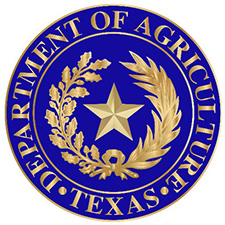(AgInsider) A decade after the House briefly put the idea into play, a senior Republican on the House Agriculture Committee said the far-ranging farm bill should be divided into two separate pieces of legislation: SNAP and everything else.
SNAP, which cost $119 billion last year, has become “an emotional, political issue” that taints consideration of farm supports, said Rep. Austin Scott of Georgia.
“Long term, that’s where we’re headed,” Scott told reporters at a peanut growers conference on July 29, although he said he did not expect the approach to be adopted this year. “Not everybody on the Ag Committee agrees with me on splitting the bill.”
Farm-state lawmakers increasingly describe the target for enacting the new farm bill as the end of this year rather than the Sept. 30 expiration date of the 2018 farm law. “I’m sure we can get an extension for a few months after the Sept. 30 deadline, but we’ve got to get it done by the end of year,” said Sen. Amy Klobuchar of Minnesota to the Red River Farm Network last week. Rep. Kat Cammack of Florida said on Monday, “I don’t know” if the farm bill will be passed this year, reported DTN/Progressive Farmer. She forecast “the biggest political dogfight in modern history” over the bill.
Farm bills traditionally combine farm subsidy and public nutrition programs to generate a coalition of rural and urban lawmakers to carry the must-pass legislation to bipartisan victory.
Despite the name, $4 of every $5 in the farm bill goes to SNAP and a handful of much smaller public nutrition programs. The panoramic legislation includes rural development, farm exports, food aid, agricultural research, crop insurance, land stewardship, farm credit, and forestry among its various chapters.
Farm and anti-hunger groups say the 2023 farm bill should continue to marry farm and nutrition programs. SNAP is important to assuring Democratic support for the farm bill, said assistant professor Jonathan Coppess of the University of Illinois. Farm subsidies and possibly crop insurance “could be incredibly vulnerable without the strong bipartisan vote that farm bills usually bring. I’d note the Freedom Caucus, Heritage [Foundation], and others do not only target SNAP.”
Scott’s advocacy of separating SNAP from the rest of the farm bill echoed the arguments in 2013 for SNAP and farm program reform. “We can’t have an honest discussion of SNAP benefits and an honest discussion on production agriculture as long as the two are tied together,” he said.
A decade ago, virtually any outcome seemed possible for the untested gambit: the demise of both food stamps and the farm program; the survival of farm subsidies but sweeping cuts in food stamps; the downsizing of the farm program and the safeguarding of SNAP; or, as happened after the legislative drama, the continuation of both programs.
Republican budget cutters and Democratic defenders of food stamps delivered a stunning defeat of the farm bill in the House on June 20, 2013 — the first time a farm bill had failed in a roll call vote. Although the bill called for the largest cuts in food stamps in a generation — $20 billion — Tea Party–backed Republicans wanted deeper cuts.
House Republicans regrouped to pass a “farm-only” bill on a 216-208 vote on July 11 and a separate bill, on a party-line vote of 217-200, on Sept. 19 to cut SNAP by $40 billion over a decade.
When Senate and House negotiators wrote the final version of the farm bill in early 2014, it included SNAP and farm supports, the traditional approach taken by the Senate in its farm bill. “We’ve got a bill that makes sense, works for farmers and ranchers and consumers and families that need help, and protects our land and water and our wildlife,” said Senate Agriculture Committee chair Debbie Stabenow at the conclusion.
Conservatives, libertarians, and fiscal hawks promoted the “split the farm bill” strategy in 2013. “Unfortunately, the politics of the farm bill make needed reforms nearly impossible,” said 14 of the groups in a letter ahead of the House vote. “The urban and rural logrolling deemed necessary to pass this bill has created an unholy bipartisan alliance that has long served to thwart fiscally responsible efforts to restrain spending and limit the growth of government.”











